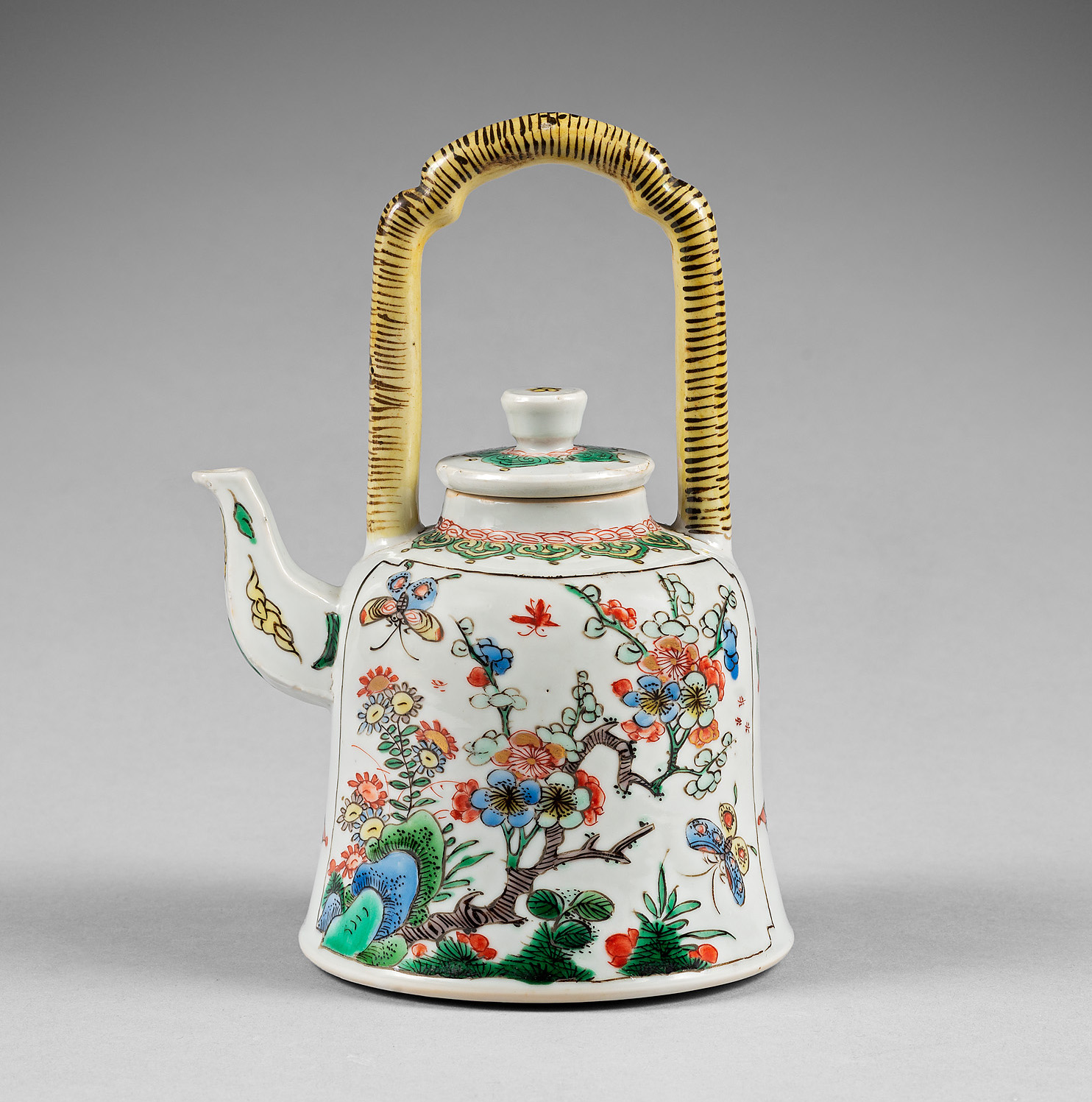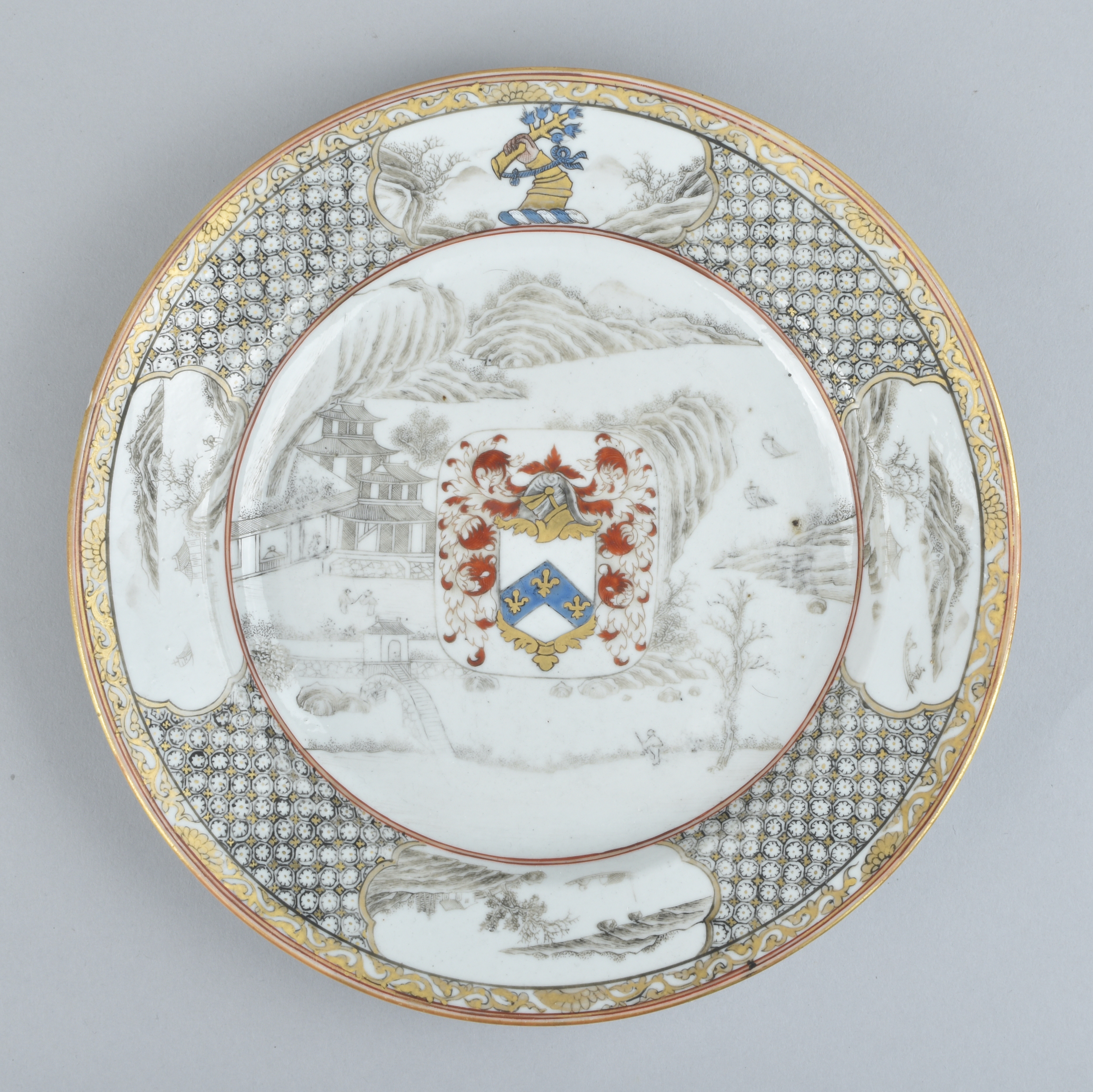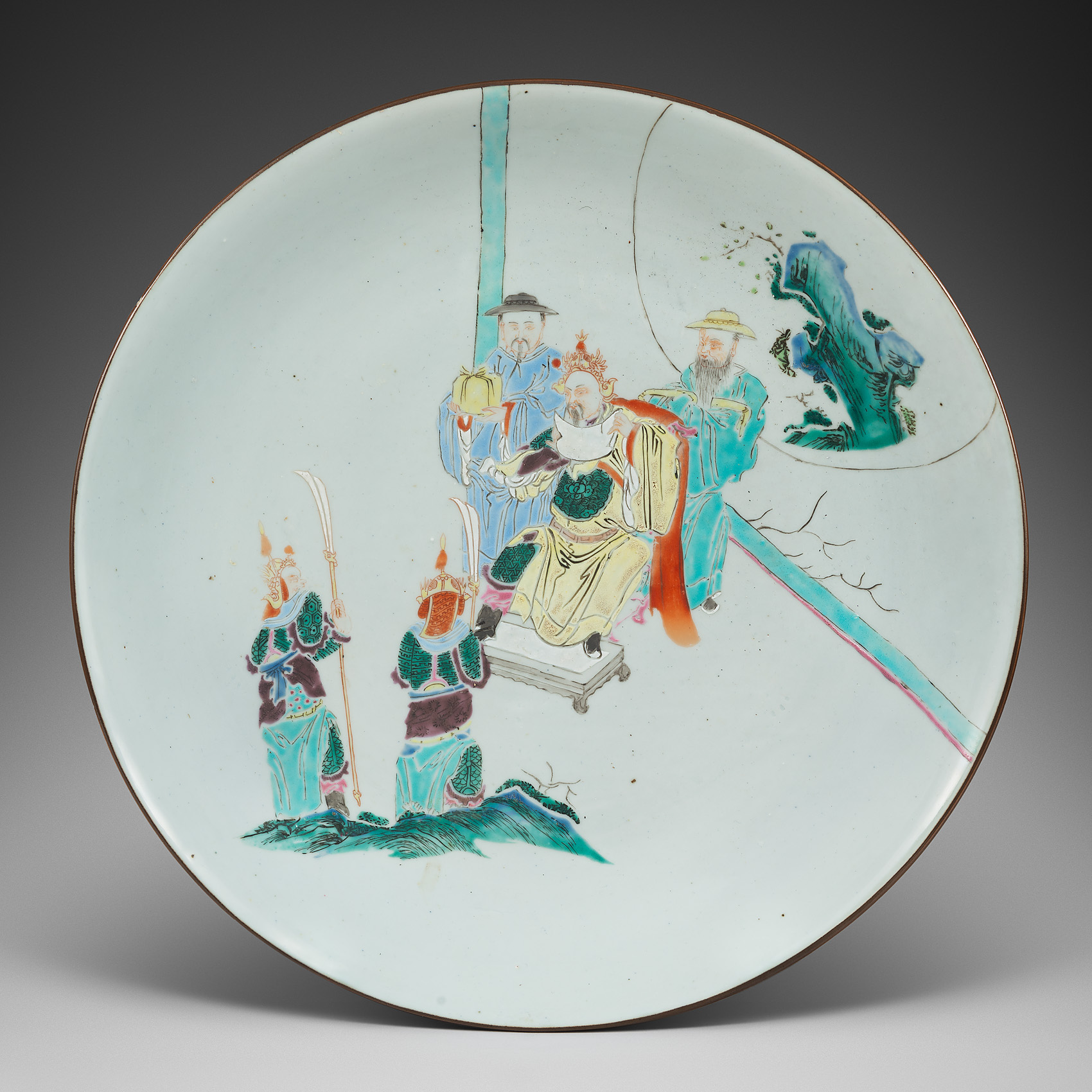

A Blanc-de-chine figure of Zhenwu, Supreme Emperor of the Dark Heaven. 17th c.
The figure modelled as Zhenwu seated in a domineering posture on jagged rockwork with a tortoise and snake emerging from the crevices, dressed in martial attire with cape over his shoulders, depicted with characteristic long combed-back hair, bare feet and mudra, with seven apertures over the face. He holds a sword in his left hand. The tortoise (ruler of the north) at the base of the sculpture identifies this figure as Zhenwu, an important Daoist deity who also was worshipped in Buddhist traditions. Zhenwu became particularly popular during the Ming dynasty (1368–1644), when he was revered as a protector of both the state and the imperial family. His role as a guardian reflects his association with the north, the direction from which China was constantly threatened by neighboring peoples from Central Asia.
- Country:
- China
- Period :
- 17th century
- Material:
- Porcelain
- Dimension:
- 9.13 in. (23,2 cm)
- Reference :
- D521
- Status:
- sold
Provenance
-Florence Jay Gould (1895-1983), Villa El Patio, Cannes.
-Her sale, Sotheby Parke Bernet Monaco, Porcelaines de Chine et Objets d’art chinois – Succession de Florence Jay Gould, 27 june 1984, lot 1343.
-Compagnie des Indes et de la Chine (inv. 16319) ; J.P. Rousset (1936-2021).
-Hamad Bin Abdullah Al Thani, Hôtel Lambert, Paris
Related works
Another figure, from the Hickey collection (Asian Civilisations Museum, Singapore), is illustrated by Rose Kerr & John Ayers in Blanc de Chine: Porcelain from Dehua, 2002, no. 26.
Another figure is illustrated by P. J. Donnelly in Blanc de Chine: The Porcelain of Tehua in Fukien. London: Faber and Faber, 1969, Pl. 101A, no. 248.
Another similar figure is in the collection of the Metropolitan of New York (accession number 79.2.481).
Notice
Zhenwu, the Perfected Warrior, emerged as an anthropomorphic deity in the early Northern Song (960-1126) and reached the peak of his popularity in the Ming (1368-1644). Prior to this time, he was known as Xuanwu, the Dark Warrior, and appeared as a tortoise entwined with a snake. Widely varying representations of this Daoist god, one of the most prominent in the Daoist pantheon, coexisted throughout the Song and later history of his cult. Different images fashioned to serve different audiences reveal the wide social range of Zhenwu believers and shifting beliefs about the god’s powers. According to the legend, the tortoise metamorphosed into Zhenwu when called for by the Song Emperor Huizong (1100-1125 CE) during a thunderstorm.
This blanc-de-chine figure is complex in terms of construction and finish. It appears to have been integrally moulded together with rock base as well as the legs and feet. It also has a shallow moulded suit of armour, with minimal carving or hand-finishing. The head, with slots for the insertion of a beard, the hands, the sword, the turtle and snake were only applied elements. This shallowness of detail and lack of additional pieces partly explains why the walls are so thin and the whole piece very light – the potter was able to excavate the internal cavity more thoroughly, as the shallow relief on the exterior would not require the support of thicker walls.
Florence Jay Gould (1895-1983)
Florence Gould was born in San Francisco, the daughter of Maximilien Lacaze, a French publisher who made his fortune in the United States. She married in 1923 the son of the industrialist, railroad magnate and billionaire Jay Gould. Settling in Juan-les-Pins in the South of France, the couple continued the family tradition as great philanthropists patronizing French literary figures, funding literary prizes and supporting various charities.
For more than half a century she had enjoyed the advantages of an immense fortune. She was a hostess who reigned on Paris and then on the Riviera, famous for having held a salon for several decades at the Hôtel Meurice in Paris, in her residence at 129, avenue de Malakoff, in her villa La Vigie in Juan-les-Pins, and then in her villa Le Patio in Cannes. There she received many personalities from literary and artistic circles.
The Goulds played a major role in the creation of the French Riviera legend, having world-famous guests at the villa La Vigie, one of the most iconic villas in the South of France, including the Duke and the Duchess of Windsor, F. Scott Fitzgerald and the Murphys.
As a lover of the arts, including literature, music and the theatre, she was an outstanding collector. The five catalogues of her auctions at the Sporting d’Hiver in Monaco in 1984, describe the furniture, objets d’art, and library which filled in her later property, El Patio. It gives an idea of the breadth of her interests, ranging from Gothic Art (her first love), to the art and literature of her century.
Woman collectors are not as rare in France as they are in England, and they certainly exist in America. Nevertheless, to find a woman bibliophile who combines that passion with the energetic and discriminating purchase of the 19thcentury and later paintings, French furniture, Chinese and European ceramics often enriched with gilt-bronze, English silver and early sculpture is perhaps unique” noted Peter Wilson in the introduction of the catalogues of Sotheby Parke Monaco. She had a legendary jewelry collection to rival that of Elizabeth Taylor’s and bequeathed much of her huge estate, $100 million, to the Florence J Gould Foundation.
The auctions of her collections set world records in 1984. Christie’s auctioned Mrs. Gould’s jewelry in New York in April 1984 for $8.1 million and Sotheby’s sold her antiques and books in Monte Carlo in June of the same year for $6.56 million. During a two-day sale in April of 1985, totaling a $34 million, Sotheby’s New York auctioned two hundred paintings and drawings from the Gould collection. The sale included work by Van Gogh, Gauguin, Toulouse-Lautrec, Cezanne, Degas, Monet, Fragonard, Raeburn, and Courbet amongst others.
![]() An annex of the American Hospital in Paris (Neuilly-sur-Seine) bears his name. In New York, the Florence Gould Hall was opened in 1988, which is run by the French Institute Alliance Française. There is also a Florence Gould Theater in San Francisco, a Pavillon Florence Gould at the Château de Blérancourt (Musée national de l’Histoire de la Coopération Franco-Américaine) and a Salon Florence Gould at the Opéra Garnier in Paris.
An annex of the American Hospital in Paris (Neuilly-sur-Seine) bears his name. In New York, the Florence Gould Hall was opened in 1988, which is run by the French Institute Alliance Française. There is also a Florence Gould Theater in San Francisco, a Pavillon Florence Gould at the Château de Blérancourt (Musée national de l’Histoire de la Coopération Franco-Américaine) and a Salon Florence Gould at the Opéra Garnier in Paris.
One of the Asian highlights of her collection, a very important seated Guanyin of the late Northern Song dynasty (960-1127) – Jin Dynasty (1115-1234) was acquired in 1984 by the Cleveland Museum of Art).

























